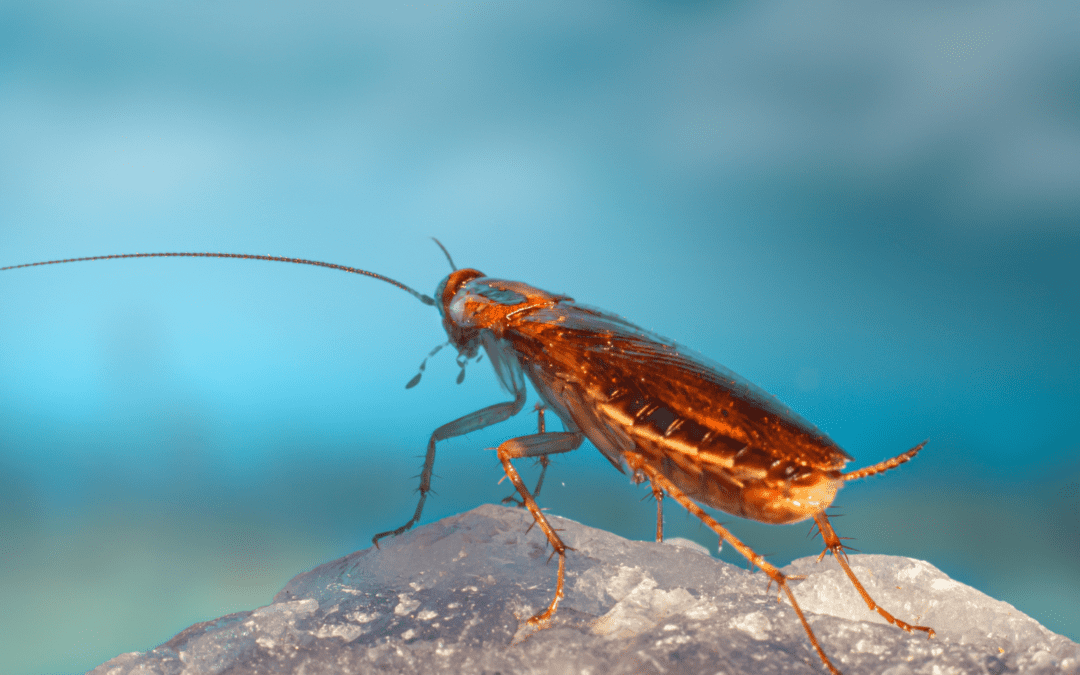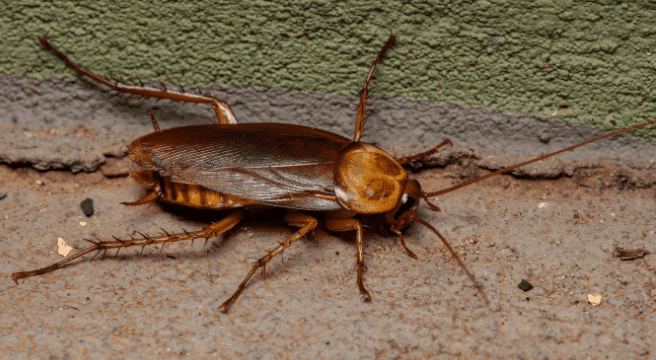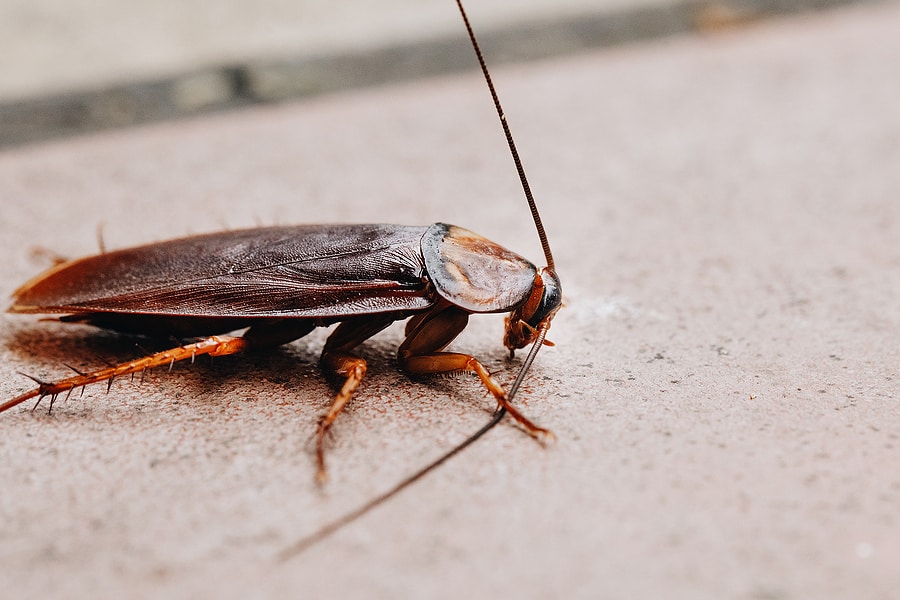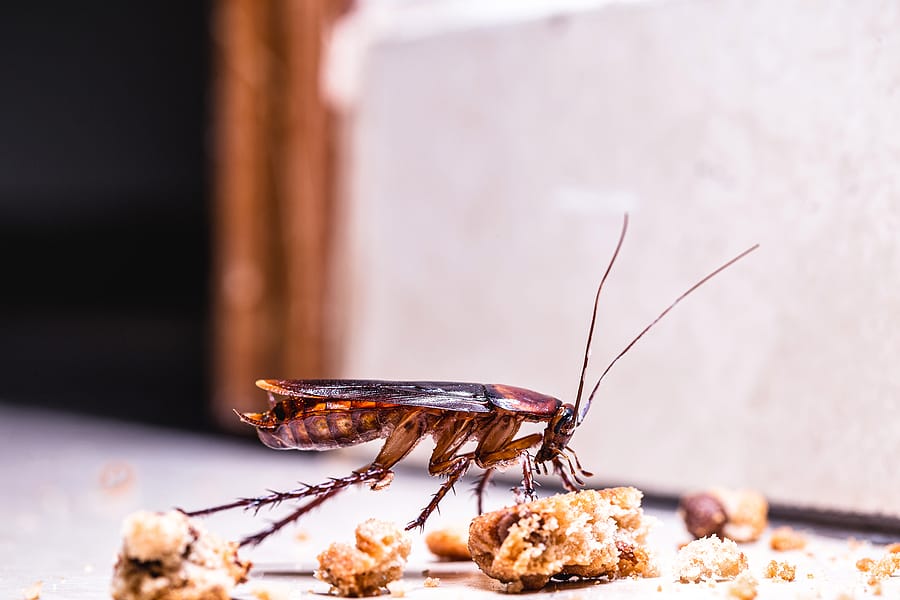READY TO GET STARTED?
REQUEST A FREE ESTIMATE
Fill out the form below or call (888) 466-7849 for a free, no-obligation estimate.

Cockroach infestations are a common issue for Newnan homeowners. These pests are more than just a nuisance; they can spread bacteria, trigger allergies, and contaminate food. With Newnan’s warm, humid climate creating the perfect conditions, it’s crucial to take proactive steps to protect your home.
The warmth and humidity in Newnan provide an inviting environment for cockroaches. They typically infest dark, damp spaces like basements, kitchens, and bathrooms, making them difficult to detect until the infestation has progressed. Common species in the area include German, American, and smoky brown cockroaches.
Cockroaches pose health risks by spreading pathogens such as Salmonella and E. coli. Their droppings and shed skin can also exacerbate allergies or asthma, making prompt and effective pest control essential.
Preventing cockroach infestations starts with making your home less appealing to these pests. Here are some key steps:
Cockroaches forage for food, so cleanliness is critical.
Cockroaches thrive in damp areas, so eliminate sources of excess moisture.
Block areas where cockroaches might enter your home.
Cockroaches love to hide in clutter. Keep your home organized and clear of piles of paper, old newspapers, and magazines to deter them. Opt for plastic storage containers instead of cardboard boxes, which can attract pests and give them a place to nest.
Green pest control is an environmentally responsible approach that uses low-toxicity solutions to manage pests. It’s just as effective but avoids the use of harsh chemicals, making it safer for children, pets, and the planet. Options include:
Green pest control not only eliminates cockroaches but also helps prevent future infestations while prioritizing the health of your home and environment.
Cockroaches are a persistent problem in Newnan, but they’re not unbeatable. By maintaining a clean, moisture-free, and clutter-free home while sealing entry points, you can make it difficult for these pests to move in. For more severe infestations, don’t hesitate to seek help from a professional pest control company that offers both traditional and eco-friendly pest control options.
Give us a call or click the button below to request your FREE estimate!

It’s never ideal to encounter cockroaches in your home. If you do, it’s best to know what types of cockroaches you’re dealing with to help determine the best way to eliminate them. Failing to remove these pests can lead to unpleasant outcomes, like allergies, that can potentially increase your chances of getting asthma.
We have broken down the three most common cockroaches found in the south and how to keep them away; let’s check it out!
This large out-of-the-house infesting roach can get up to 1.5 inches in length. These roaches develop wings towards the end of their life cycle, with males having some longer than their bodies. You can usually identify them by the yellow band located behind their head.
The American cockroach can typically be found where food is abundant. They also prefer drains that aren’t used as often. In the wild, they prefer dark or damp wood piles.
One of the most common species found worldwide, the German cockroach is generally light to dark brown and has two stripes near the back of its head. This species does have wings. They prefer dark, moist places. Since they don’t do well in the cold, they thrive in the southern climate.
This species first entered the U.S. in 1903 and is now found nationwide. The brown-banded cockroach got its name from the two light brown bands that appear across its wings. They prefer warmer, drier, and higher locations in a room and can be found mostly in cabinets and behind picture frames. This species will typically hide its egg cases in or underneath furniture.
While prevention can help keep cockroaches away, sometimes it’s best to get a professional involved. A local pest control company will be able to inspect your home and provide you with the best treatment and prevention plan going forward.

There’s one pest that every homeowner would rather not see inside their home – cockroaches. There are many distinct species of cockroaches, and each has their own unique characteristics. There are two popular types of cockroaches in the southeastern part of the US, but the American Cockroach is the largest and one of the most common out of the two. Here is a breakdown of the American cockroach and how to decide your plan of action to remove them from your home.
What is an American Cockroach?
The American cockroach is a major pest in the United States and is the largest of the home-infesting roaches. They are commonly known as the water bug, the Bombay canary, or the palmetto bug. This specific species is not native to United States, despite its name. They are typically reddish-brown with a yellowish figure eight pattern on the back of their head. They are oval shaped and range from 1 1/4″ to 2 1/8” in length.
Where are They Found?
American cockroaches are typically found outside, but it is not uncommon to find them indoors. During the summer months they can be found outside in areas like flowerbeds and underneath mulch piles. They will typically move indoors when they experience a notable change in the weather or food shortage. They prefer warm, moist, and dark environments such as basements or crawlspaces. These pests can enter structures through the sewer system, via human belongings, or by mass migration from other structures.
Are They a Threat?
The presence of American cockroaches in a home can pose a serious threat to your health. Cockroaches have been known to spread at least 33 kinds of bacteria, including E. Coli and Salmonella, along with different types of parasitic worms and other kinds of human pathogens. They have also been known to elicit year-round allergic reactions and asthma attacks due to their saliva, urine, and fecal droppings.
How Can I Prevent Them?
There are many ways to prevent roaches from entering your home. Here are some of our favorite ways to keep them out.
Finding these pests in your home can be quite alarming. Implementing cockroach prevention measures such as fixing leaks, sealing off entry points, and keeping kitchen and bathrooms clean will help keep these pests out. If this happens despite your best efforts at prevention, consider contacting a professional local pest control company that can help identify your pest, locate points of entry, and provide a prevention plan for your property to help keep roaches out.

The cockroach might just seem like a creepy, annoying nuisance, but it can cause more damage than expected. Cockroaches transmit over 30 different kinds of bacteria – E. Coli, Salmonella, and more. In addition to this, they can also trigger asthma and allergy attacks as their droppings, saliva and shed skin contain allergens that increase asthma symptoms, especially in children.
As one of the most common household pests, it’s important to keep roaches under control to lessen the effects they cause. Here we breakdown the types of cockroaches you could be seeing in your home and how you can prevent them in the future.
While prevention can help keep cockroaches away, sometimes it’s best to get a professional involved. A local pest control company will be able to inspect your home and provide you with the best treatment and prevention plan going forward.

Your home provides warmth, shelter, and food – three things roaches are in search of this winter season. These pests will easily sneak in and infest your home if there are no preventative measures in place. Check out our top 3 ways to prevent cockroaches from entering your home.
Declutter Your Home
During the day, roaches tend to hide in dark secluded areas until nightfall arrives. By decluttering your home, you eliminate the chance of these pests from hiding out inside and finding items to use for shelter, such as cardboard or newspapers. Instead of using cardboard boxes for storage, switch them out for plastic storage containers. Always recycle and get rid of any old newspapers and unused cardboard boxes.
Seal Up Your Home
If you can see daylight coming through the outside of a door or window, chances are that cockroaches can get in. Roaches can fit into the smallest cracks or crevices leading inside the home. It’s important to inspect the exterior of your home frequently, always looking along the foundation, roof, attic, or crawlspace vents. If a smaller gap or hole is found, seal them using caulk. For larger holes, use steel wool or foam and for chimneys and attic vents use fine wire mesh.
Dry Out Your Home
Moisture will always attract roaches since they need water to survive. It’s important to check your home for leaking faucets, sinks, pipes, and even your refrigerators and appliances. If you notice a leak, make sure you get it fixed immediately.
While prevention can help keep these pests away, sometimes it’s best to call a professional. A pest control company will be able to thoroughly inspect your home, identify the type of cockroach you have, and provide you with the best treatment and prevention plan moving forward.